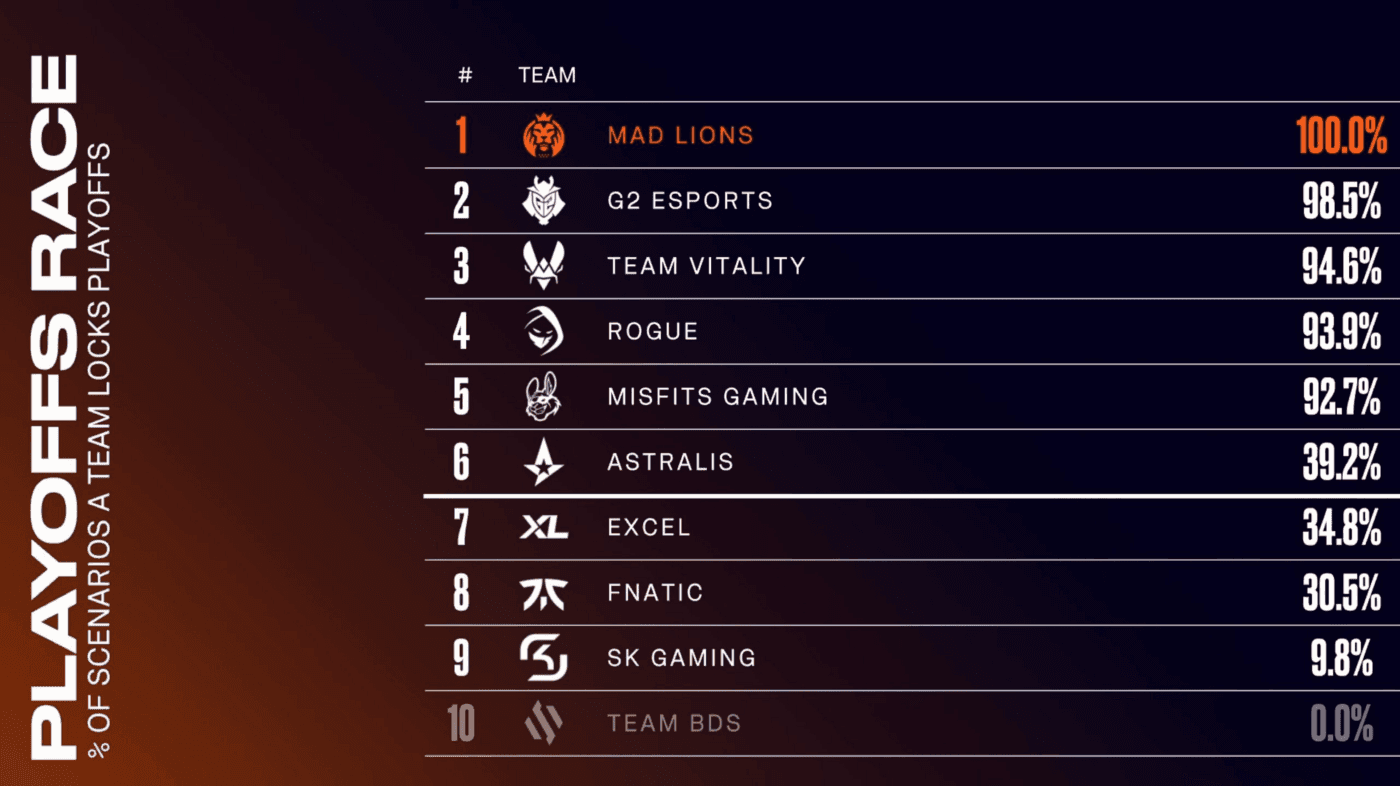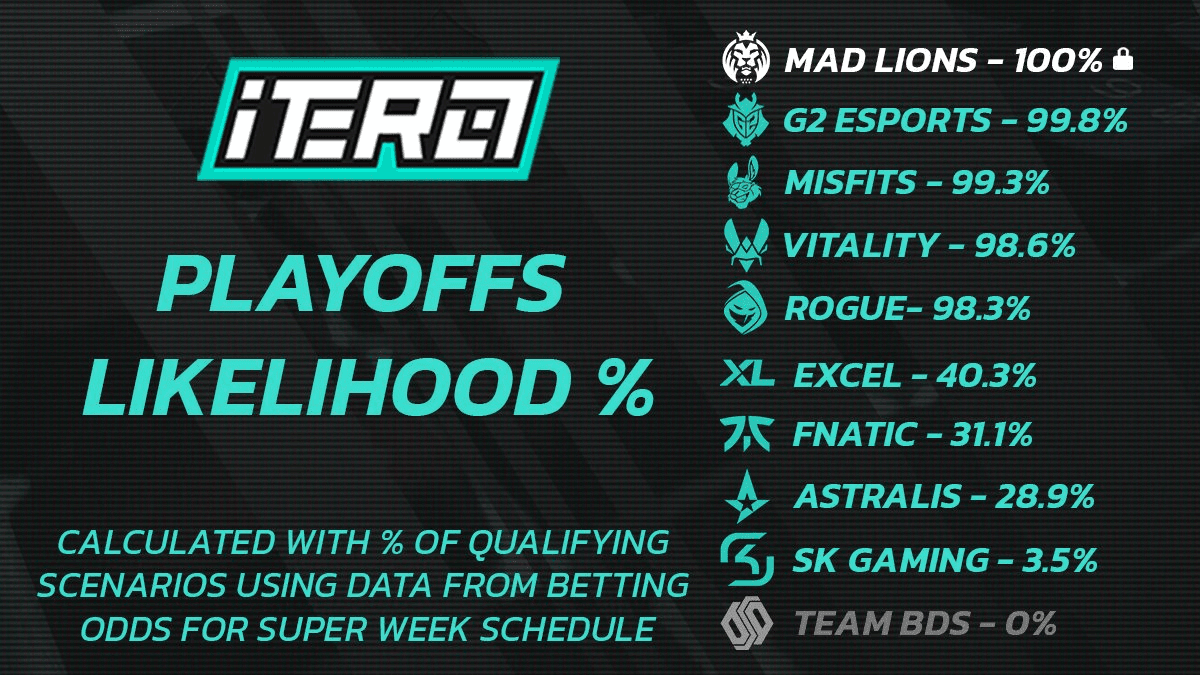LoL: Evaluating Teams with Betting Odds
Last week I wrote the final article in a series on evaluating draft in professional play. Consider this a bonus, something for the appendix. Today, we are talking about what I referred to last week as “Team Diff.”. If you haven’t read the previous article then I advise you do so, if however you don’t like being told what to do then here’s all you need to know is:
Draft is important. Just not as important as the team.
What I mean is, if I was challenged to predict the result of a game and I could choose between EITHER knowing who the two teams were OR what their two drafts were — I’d always ask for the teams. Name plates over Champion names.
Drafting well can improve your chances, it can even double them. However, if you’re doubling your win chance from 10% to 20%, you’re still a long way off winning that game.
So, the question becomes “if you knew who the teams were, how do you pick a winner?”. For me, it’s simple. I use the average betting odds. I go to all the major betting providers, find out what they’re saying the chances are for each team and then I use this to pick a winner. There are entire teams who’s job it is to build models and critically analyse the players in order to set reliable odds. Why wouldn’t I use them?
It sounds like a free win, right? Unless you’re trying to make money from gambling (not advised) there’s no need to beat the bookies. Just copy them. This means that when I’m building another model, let’s say one that can evaluate a draft, I don’t need to sweat over knowing whether Team A or Team B is stronger. I just grab the betting odds and use that as a baseline.
However, there’s something you should be aware of: Betting providers are incentivised to minimise risk, not maximise accuracy.
Let’s imagine it’s MAD Lions vs. Team BDS (substitute 100T vs. Dignitas or Gen.G vs. HLE). The data scientists over at Big Bet (fictional) do all the analysis and determine that MAD has an 85% win chance. They might set the odds around 1.15 for MAD and 5.5 for BDS. If you bet £1 on MAD and they win, you get £1.15 back — £0.15 in profit. That means, in the 85% of the times that MAD win, Big Bet lose £0.15 for every £1 bet. In the 15% of times that BDS win, they lose £5.50 for each £1. They make money by taking £1 for every losing bet, obviously. Let’s look at this in the form of an expected return:

Expected Return for Big Bet on a game between MAD Lions and Team BDS
Remember, this is from the perspective of Big Bet. As you’d expect, their expected return is positive. £55 was bet on their platform, and they are expected to take a £1.25 cut (2.2%). By using this method consistently they will, on average, always make money. The house always wins, after all.
However, it’s not just about maximising the expected return — it’s about minimising the potential loss. In this case, 50 people bet on MAD and 5 bet on the underdogs of BDS — if MAD win they lose an acceptable £2.50. If BDS win, they make £22.50.
The thing that these betting providers need to deal with is that a majority of bettors are unsophisticated. They are gut instinct bettors. They’re super fans showing their support.
This may be tough, but imagine a world where Team BDS are the single most popular team in the world. Everyone is a believer, they’ve just been having an unlucky run. Sure, the bookies say they have a 15% chance but I heard they’ve won every scrim this week and they’ve been holding back pocket picks. At odds of 5.5, this is free money. This narrative leads to 100,000 people betting for BDS, whilst just 10 suckers go for MAD Lions.
How does that look for Big Bet?

The Maximum Loss for Big Bet if the underdog won and a large number of bets.
An expected return of £2,500 for the £100,010 (2.5%) is a similar percentage to the previous scenario. However, look at that potential loss! If Team BDS do actually somehow win the game Big Bet loses £0.5M in one game. Fine, most betting companies can afford one-off losses, but remember they are giving odds for hundreds of different sports games at once. One unlucky run and they could lose tens of millions of pounds in a matter of hours. In finance, liquidity is everything. That sort of cash isn’t something you can call up on quickly, so they fail to pay out the bets and the next thing you know they’re declaring bankruptcy.
Given that’s not exactly the ideal situation for them, what they’ll do is adjust the odds to manage the potential loss. Moving the odds towards even will both reduce the amount they’ll have to pay out (lower odds for BDS), and will also encourage people to bet on MAD Lions, which means in the unlikely case that BDS win, they can still make some money from the other side of the bet.
Essentially, what this means is that betting odds are on one hand trying to be accurate, and on the other trying to balance for the demand. This is why they aren’t as reliable as you would expect them to be. T1, Fnatic, G2 Esports, TSM, these legacy teams tend to have larger fan bases than follow them into the dark no matter their recent performance. Therefore, they have deflated odds. A team like Astralis, who’s had historically poor performance but is having a strong run this year will have inflated odds, since there’s not many hardcore believers out there.
The solution to dealing with this is actually quite simple. Use the betting odds as a baseline and build on it. Find key features about teams that will make your prediction even more accurate than the betting providers. This sort of leads onto the next series that I will be starting in a few weeks time, focusing on the evaluation of players and teams for the benefit of scouting new talent.
Anyway, before all that here’s a little exercise I did. The LEC does some hardcore maths and calculates how many scenarios each team makes play-offs. Here’s their results:

The LEC Playoffs Lock-in %
I took this same approach, except rather than assuming every game is a 50/50, I applied the betting odds to adjust the probability based on the strength of schedule. Here’s the final result:

The iTero Probability Adjusted LEC Playoffs Lock-in %
Big Moves:
Astralis plays Fnatic, MAD & Excel — they are the underdog in every one of these. This means there chances drop from 6th with 39.2% to 8th with 28.9%
Excel plays Astralis, SK & Rogue — since they are favoured against Astralis/SK they actually gain an extra 5% and move into 6th place.
Fnatic are actually expected to win more games this weekend than Excel, BUT because Excel is 2–0 vs. Fnatic this split in all the scenarios where they have even wins (which is a lot), Excel go through because of the head-to-head rule.
Since Misfits play Team BDS they gain an extra ~6% and all but guarantee a spot.
SK Gaming, sadly, have the tough task of having to beat Vitality, then Excel and then finish off against G2 Esports. Since these aren’t 50/50 games, their chances crumble to only 3.5%, from around 10%.
Obviously, in a Bo1 anything can happen, however I thought it was a nice little use-case for betting odds.